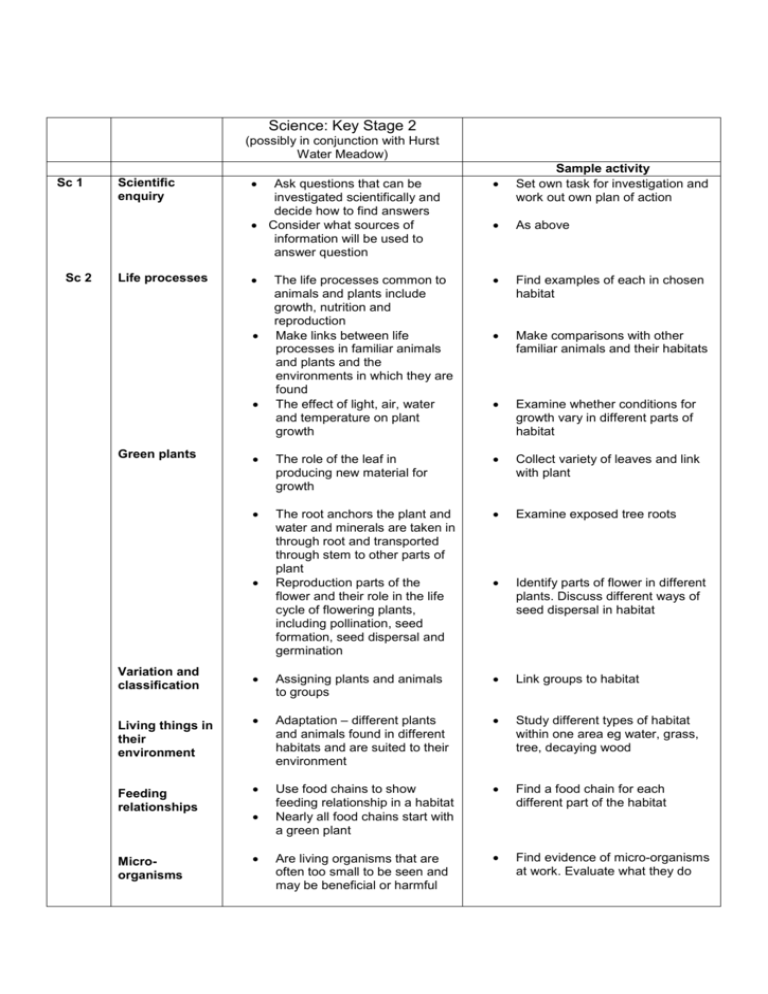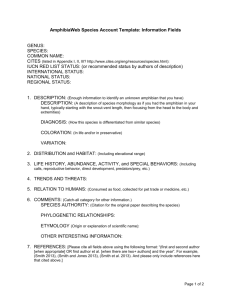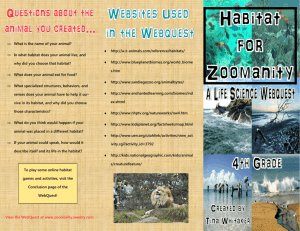SCIENCE KS 2 - Dorchester Abbey
advertisement

Science: Key Stage 2 (possibly in conjunction with Hurst Water Meadow) Sc 1 Sc 2 Scientific enquiry Life processes Ask questions that can be investigated scientifically and decide how to find answers Consider what sources of information will be used to answer question Sample activity Set own task for investigation and work out own plan of action As above The life processes common to animals and plants include growth, nutrition and reproduction Make links between life processes in familiar animals and plants and the environments in which they are found The effect of light, air, water and temperature on plant growth Find examples of each in chosen habitat Make comparisons with other familiar animals and their habitats Examine whether conditions for growth vary in different parts of habitat The role of the leaf in producing new material for growth Collect variety of leaves and link with plant The root anchors the plant and water and minerals are taken in through root and transported through stem to other parts of plant Reproduction parts of the flower and their role in the life cycle of flowering plants, including pollination, seed formation, seed dispersal and germination Examine exposed tree roots Identify parts of flower in different plants. Discuss different ways of seed dispersal in habitat Assigning plants and animals to groups Link groups to habitat Adaptation – different plants and animals found in different habitats and are suited to their environment Study different types of habitat within one area eg water, grass, tree, decaying wood Use food chains to show feeding relationship in a habitat Nearly all food chains start with a green plant Find a food chain for each different part of the habitat Are living organisms that are often too small to be seen and may be beneficial or harmful Find evidence of micro-organisms at work. Evaluate what they do Green plants Variation and classification Living things in their environment Feeding relationships Microorganisms Sc 3 Materials and their properties Comparing everyday materials and objects on the basis of their material properties Discuss why certain materials were chosen to build Abbey or village houses Sc 4 Physical processes Identify forces and the direction in which they act Find examples of forces affecting buildings and consequences











